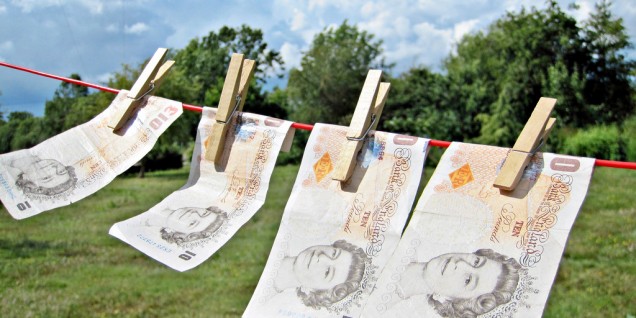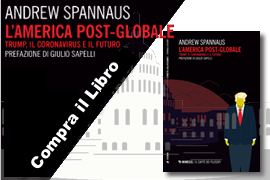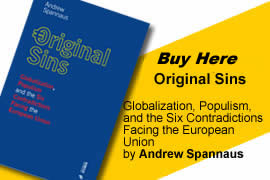Paolo Balmas – July 2018
Interview with Maureen Mutua
Transatlantico returns to the issue of money laundering, dealt with in one of our first posts years ago, a widely-circulated interview with Antonio Maria Costa, former Executive Director of the United Nations Office on Drugs and Crime (UNODC).
Paolo Balmas recently interviewed Maureen Mutua, a specialist in anti-money laundering based in the United Arab Emirates. She holds an MBA from the University of Bolton (UK), and throughout her career she has developed extensive experience in client due diligence, money laundering, sanction regimes, fraud and corporate governance.
Her book, Mastering Anti-Money Laundering (available here), is a great introduction to the shadowy, complex and little-known world of money laundering. Paolo Balmas had the pleasure to meet her and ask her some questions, receiving precious answers that help to better understand this ever more important matter.
1. Why did you write a book on anti-money laundering?
I wrote a book on anti-money laundering because, from my many experiences with people in the industry and society in general, I felt that many did not understand the true and long-term negative effects of money laundering and how an untrustworthy financial system is detrimental to society at large. I wanted people to understand that failing to have a credible financial system means that society accepts corruption and by so doing empowers and normalizes criminality. Additionally, I wanted to spread awareness on how deep money laundering has become ingrained in our financial institutions and how normal citizens could be used to facilitate it. I also wanted to give best practice recommendations on how financial institutions can protect themselves from becoming a conduit for money laundering.
- In simple terms, how does the money-laundering system work?
The process starts with a criminal wanting to ‘clean’ funds from a criminal activity. Criminal activities ranging from drug trafficking, funds obtained from kidnapping and extortion, fraudulent acquisition of funds in a private firm and corruption in the allocation of government funds. The first step is placing the money into the legal financial system. This stage is called the Placement. The next stage is layering, layering involves converting the funds into complex layers of financial transactions to obscure the money trail. Here, the launderer hides their tracks through an intricate series of techniques that obscure the history of the money in the probable event of an investigation. The last stage is integration, integration allows illegal money to re-enter the mainstream economy and to benefit the original criminal. This stage involves integrating the laundered money back into the economy under a veil of legitimacy. At this stage, the money is now fully available to the criminals for use, as it has passed through the financial system and is now considered legal and therefore unlawful profiteering commences.
- Money laundering involves primarily money from arms and drug trafficking. This links organized crime to the banking system. What is the extent of this nexus today?
Criminals have taken advantage of offshore financial centers and bank secrecy jurisdictions and major financial havens that exist within the global financial system to facilitate money laundering. Financial secrecy laws allow clients to conduct confidential activities that cannot be scrutinized. When a financial institution is not obligated to reveal a client’s activity to a bank’s supervisor or financial regulator, it becomes easy for drug traffickers to use such jurisdictions because they are not obligated to be in compliance with the money laundering laws. Because of such secrecy laws, law enforcement officials cannot obtain the evidence they need to prosecute. Banks are not entirely to blame, as different governments allow their countries to become secrecy and financial havens. To prevent organized crime, governments need to promote banking and company incorporation transparency so as to prevent launderers and criminals from exploiting specific banking jurisdictions with the ease and benefit as they do at the moment.
- The involvement of banks in money-laundering activities implies the production of paperwork necessary for making dirty money licit. If we assume that money laundering involves such paperwork, we also must assume that a part of the white-collar armies in our financial centers is directly involved in criminal activity. Could you elaborate on this?
The responsibility of bank employees is to file a suspicious transaction report of sums above a certain threshold. The report is then forwarded to the country’s financial intelligence unit for investigation. Banks are not under obligation to pursue criminals, but they are mandated to report any suspicious activity in a client’s account. Therefore, we cannot say they are always directly involved in criminal activity, but failure to report large deposits (whether in cash or in checks) that have no apparent justification and that attract attention can lead to a bank being found guilty of facilitating money laundering.
- The involvement of large banks and their bureaucracies raises the suspicion that regulators sometimes turn a blind eye. Money laundering brings large amounts of cash into the system; is it possible that there has been a tacit acceptance of this practice, or a grey area where it has been allowed to flourish?
There is a lot of complexity in successfully investigating a money laundering crime. Resources and personnel are required to process suspicious transaction reports given to the regulatory authorities. In addition, investigation difficulties are amplified by the fact that, in many cases, financial and secrecy havens enforce very strict financial secrecy, effectively shielding suspected money launderers from investigation and prosecution. In April 2018, the European Parliament passed The Fifth Money Laundering Directive. The directive recommends having an ultimate beneficial ownership (UBO) registry available in the public domain that contains all the UBOs and structures of foreign entities and how they are connected to the respective jurisdiction. I believe such a transparent system will address the grey areas, it will greatly aid in reducing money laundering and in investigating the same.
6. In the last few years, the issue of human trafficking, related to mass migration across the Mediterranean Sea to Europe, has come to the fore. Migration is strictly connected to insurgency and terroristic activities and, in part, it follows arms, drug, and commodities trafficking throughout the MENA region and Europe. From an anti-money laundering perspective, do we have to take into account the existence of a common denominator?
Absolutely, organized crime, terrorist groups, and human traffickers need financial resources to flourish and for their operations. They use the legal financing system to access funds. Depending on the size and scale of their operations, they use different monetary practices to fund their activities. For smaller operations, they tend to access funds using informal banking systems such as the traditional system of hawala and for big operations, they use the mainstream financial system. The onus will be on governments and financial institutions to remain vigilant so as to disrupt their private financing sources and to prevent them from accessing other forms of financing. As a result, government policy needs to evolve quickly to reflect and address this upsurge. Before these groups get out of hand, government task force committees and working groups comprising of anti-money laundering and terrorism financing experts, members of the judiciary, law enforcement officials and relevant state representatives should be established to expedite investigations.
- The phenomenon of money laundering has been put in relation to the growth of banking networks in countries whose economies are not evolved enough in terms of size and complexity to justify such a growth. Do you think the growth of banking networks in the Western Balkans countries could provide an example?
Any country with lax anti-money laundering and banking laws and any country high in bribery and corruption is vulnerable to being used for money laundering and terrorist financing. This laxity is an enabler. An investigation dubbed the Russian Laundromat conducted by OCCRP and an EU special commission was set up by the European Union to examine why European banks were involved and why their anti-money laundering processes did not work. This was Eastern Europe’s largest money laundering scheme, it involved twenty-one U.K, Cyprus and New Zealand shell companies and Russian and Moldovan banks. At the time, the Moldovan law enforcement was not sophisticated enough to understand what was going on. The investigations revealed that international banks were directly or indirectly involved in laundering an estimated $80 billion out of Russia between 2010 and 2014. The money left Russia and first went through Moldova and Latvian banks and from there the money spread to ninety-six countries. The money was laundered through fifty global banks even though they had anti-money laundering procedures in place. The money was able to be made available to 5140 companies which held bank accounts at seven thirty-two banks in ninety-six countries. Based on the above, money laundering is a global phenomenon and cannot be ascribed to a particular region.
- Countering money laundering: What to do and how to do it? Are we faced with the necessity of reforming the financial system?
One of the best solutions is transparency. Transparency in offshore financial centers and bank secrecy jurisdictions and major financial havens. These are the main enablers of money laundering. Secondly, technology such as the blockchain which allows a record of every transaction ever made to be accessible and stored across vast numbers of computers. Theoretically, the blockchain is advantageous because it is a safe and secure way of storing financial transaction data and because a blockchain single entry is connected to the previous and subsequent entry. Blockchain can ameliorate money laundering by addressing the impact of jurisdiction barriers and gaps by providing unrestricted access for the purposes of sharing anti-money laundering intelligence across borders. Thus, revolutionizing the future of preventing money laundering.
- Have you any recommendations for the European institutions regarding the realization of the European Banking Union from the angle of anti-money-laundering?
The banking union in the European Union is on the right track, given that it has called for the creation of a UBO registry that is available on the public domain. What it needs to tackle is the reputation of some of its jurisdictions being known as offshore financial centers and bank secrecy jurisdictions that facilitate money laundering.








July 22, 2018
Economia, English, Notizie